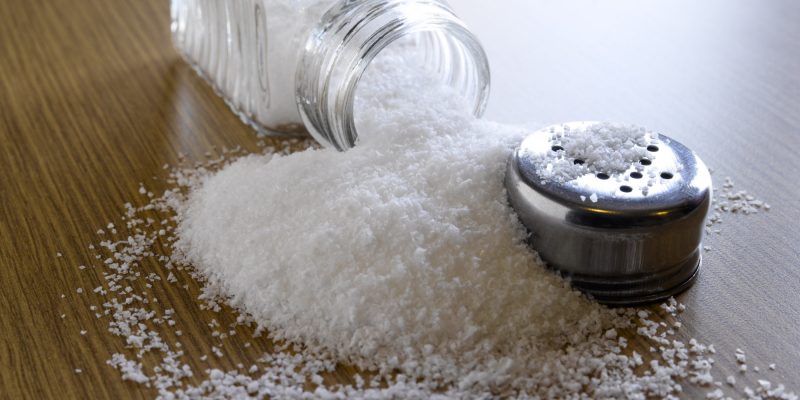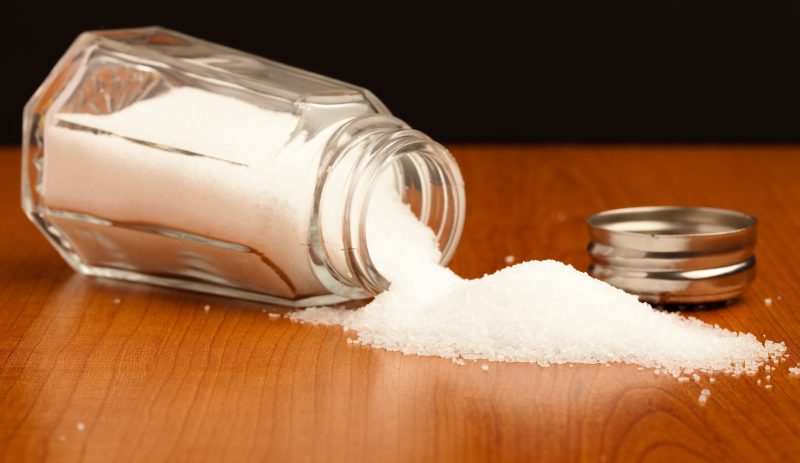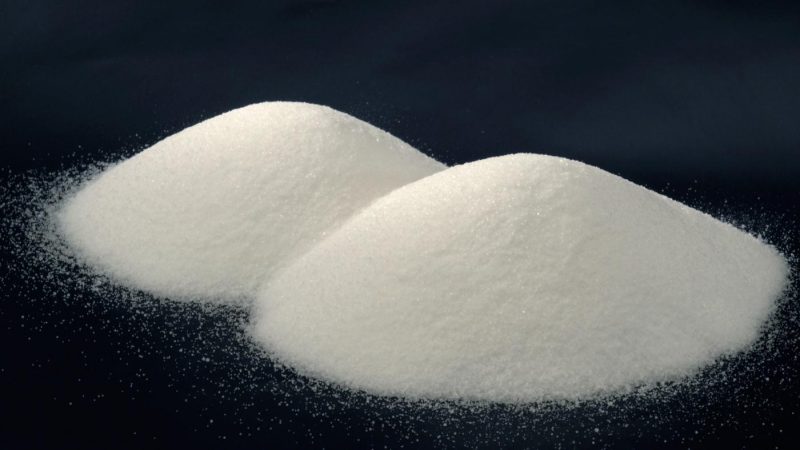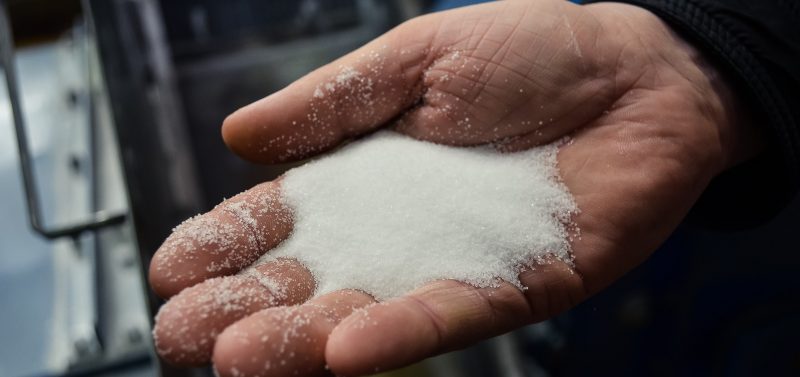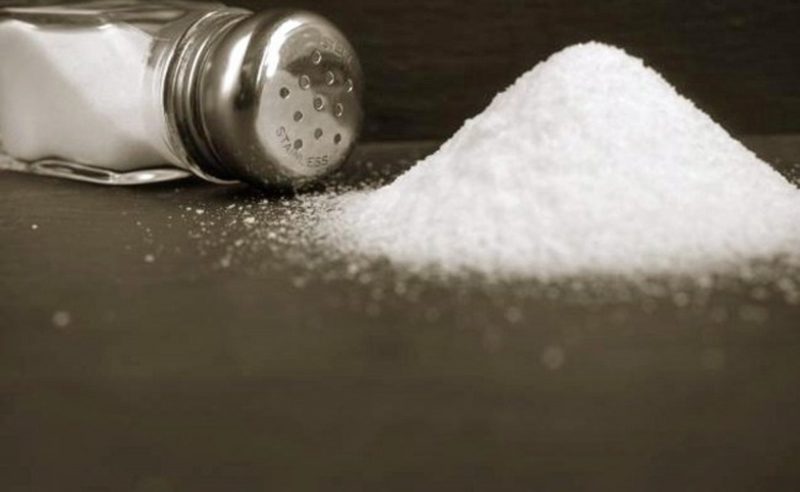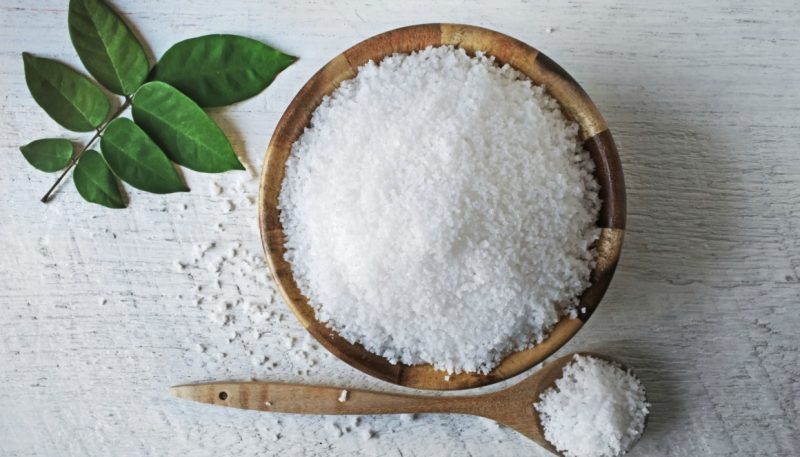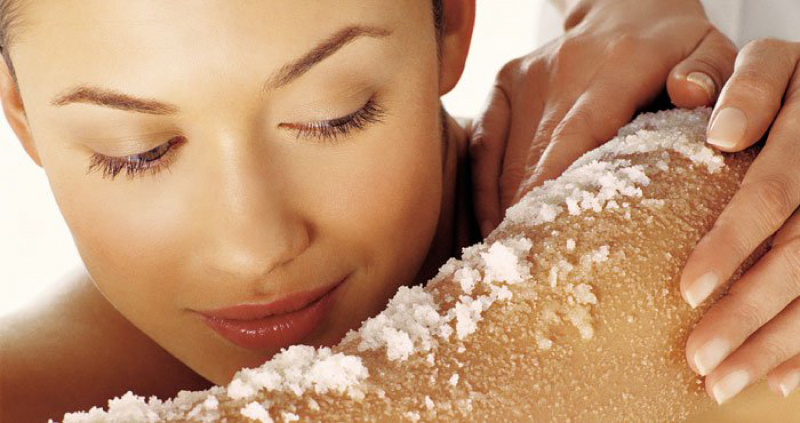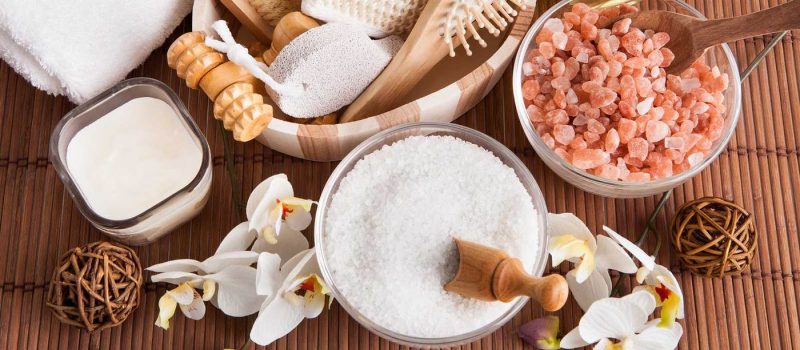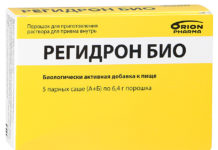The iodine needed for the thyroid gland is found in very small amounts in food. But if the trace element is not enough, then iodized salt will help - a common and affordable seasoning. Its packaging is different, but the taste is the same as that of “ordinary” salt.
Material Content:
Chemical composition, iodine content
Iodized is the same table salt (edible), or sea salt, only enriched with a trace element. In addition to sodium chloride, it contains iodide or potassium iodate (KIO3).
On the recommendation of WHO, add such an amount of one or another substance so that in 1 kg of iodized salt contains 20-40 mg of trace elements.
In Russia, they adhere to this standard, but deviation up or down by 15 μg / g is allowed.
Possible loss of iodine is still in the manufacturing process or when storing spices in the store. The shelf life of the product with the addition of potassium iodate is 18 months, subject to airtight storage. If the packaging with salt is open, then the iodine content begins to decline.
How iodized salt differs from usual
Edible salt (experts propose to refuse the term "table") - an additive to food, spice, a widespread flavoring seasoning. The content of sodium chloride in the product is 95 - 97%. The chemical formula is NaCl. There are other elements in it, except for sodium and chlorine, and their amount depends on the origin and method of extraction / processing of raw materials.
Varieties of salt used in food:
- Stone. It is mined in places of halite mineral deposits.Raw materials are crushed and sieved, do not dissolve, do not heat, iodine is not added. This food supplement may contain harmful impurities (arsenic, copper, lead, cadmium, mercury, tin).
- Marine. Precipitated by the evaporation of sea water, the richest in composition. Contains 90 - 95% NaCl, as well as ions of other metals and non-metals.
- Boiling out. Received by evaporation of the dissolved rock salt. The method provides an increase in the content of NaCl to 97%.
- Extra. The finest grinding edible salt obtained from boiling. For whitening and anti-caking, calcium or magnesium carbonate, sodium (potassium) hexacyanoferrate and other anti-blocking substances are added.
- Iodized. Enriched with iodine, boiling and sea salt.
- Sadochnaya. It is obtained in caves from the bottom of salt lakes.
The daily norm of edible salt recommended by the World Health Organization is 5 g, but the average consumption in the world is higher - 10 - 15 g.
It is easy to calculate how much iodine is in iodized salt. 5 g of this flavoring seasoning contains 0.1 - 0.2 mg, or 100 - 200 μg of iodine.
Salt iodization is a simple and economical method of filling the lack of trace elements in the body. Spice is added directly to dishes in small quantities, regardless of age, gender, season. Subject to consumption standards, it is impossible to overdose a trace element.
Benefits for the human body
Iodine is a chemical element. It is also called a simple substance in the form of brilliant crystals of dark purple or gray-black. This highly toxic compound can evaporate (sublimate), bypassing the liquid state.
The human thyroid gland needs iodine in the form of ions for the synthesis of the thyroxine prohormone and the triiodothyronine hormone.
These bioactive substances regulate the metabolism and functioning of the cells of the immune system. With a lack of iodine, insufficient hormones are formed, metabolic processes are disrupted, all body systems suffer.
What is useful for women
Women and children of both sexes are more at risk for iodine deficiency. The condition is manifested by drowsiness, weight fluctuations, dry skin, swelling of the face, brittleness and hair loss, destruction of nails. Due to the intake of a sufficient amount of trace elements, the production of thyroxine and triiodothyronine is normalized, and the appearance improves. Women need 120 mcg / day of iodine.
The need for a trace element during pregnancy and breastfeeding is increasing. During these periods, the daily dose of iodine should be 200 mcg or more. Moderate consumption of iodized salt reduces the likelihood of spontaneous abortion and abnormalities in the fetus / baby.
Useful properties for men
Russian experts believe that 120 mcg / day of iodine is enough for men. This amount corresponds to 3 - 8 g of enriched salt (one incomplete tsp or 1.5 tsp). The calculation method differs in different countries. The daily intake of iodine by adults recommended by the German Nutrition Society is 180 - 200 mcg / day (4 - 5 tsp with a trace element content of 40 mcg / g).
A sufficient amount of iodine in the body helps maintain men's physical activity and stamina. The trace element is necessary for the prevention of neuropsychiatric disorders, problems with memory and concentration.
For children's health
Iodine contributes to the normal growth of the child, the prevention of speech disorders, mental retardation. Iodized salt, used by women during pregnancy, helps to prevent certain violations of the fetal development and cognitive impairment in children.
Even with a slight iodine deficiency, the IQ of the baby is reduced by 10 points.
Recommended daily dose of iodine for children and adolescents (in mcg):
- up to 2 years - 50;
- from 2 to 6 years - 90;
- from 7 to 12 years old - 120.
Sea salt, enriched with iodine, is used externally for baths, lotions, applications.Water procedures help if the child has SARS, frequent urination, skin infections.
How to use for health
In many regions, there is very little iodine in soil and water. Such areas are usually located in the mountains and / or away from the coasts of the seas and oceans. In Russia, from 10 to 15% of the urban and 13 to 35% of the rural population suffers from iodine deficiency conditions. Adding iodized salt to food provides a reserve and maintain the necessary level of trace elements.
Benefits of consuming micronutrient-rich salt:
- The intake of the recommended dose of iodine by the WHO with just 1 tsp. product.
- Prevention of thyroid dysfunction.
- Goiter Prevention.
Iodine is able to accumulate in tissues, therefore, it is impossible to exceed the recommended daily doses.
Experts, when discussing the benefits and harms of iodized salt, argue that it is impossible to overdose a trace element if the flavoring is properly used. Only a daily intake of 2000 micrograms of iodine into the thyroid gland of a healthy adult can lead to disease. To get this daily dose of trace element, you need to consume 80 g of iodized salt every day.
The usual consumption of enriched flavoring does not cause an overdose of trace elements. On the contrary, it does not guarantee getting rid of the risk of iodine deficiency. Iodized salt loses its properties during storage in an unpressurized packaging, in the light.
Application in the beauty industry
For cosmetic procedures, it is better to use iodized sea salt. If it is not, then a solution of ordinary, boiling, containing iodine is suitable. They rub it on the face and / or shoulders, neck, back with acne and acne. Concentrated saline for procedures needs to be prepared daily.
Iodides and iodates are strong oxidizing agents that kill germs in place of wounds, abrasions, and cuts after shaving.
A bath with iodized sea salt benefits the entire body and skin. The procedure helps the best exfoliation of dead epidermal cells, disinfection of the urinary tract, helps to relax the body and soothes the nervous system. One full bath will require about 1 - 2 kg of product. Minerals penetrate the dermis, moisturize, stimulate blood circulation, and prevent skin aging.
Cooking use
Iodine compounds in salt are unstable. After a few months and when heated, the iodide content is significantly reduced. Potassium iodate is less degraded. In any case, you do not need to stock up on salt with a trace mineral for future use. This type of flavoring is not recommended for use in dishes that are very hot.
From fine iodized salt, vegetables can become soft after salting. Coarse rock salt No. 1 is better suited.
Loss of iodine during heat treatment is up to 60%. In addition, hexacyanoferrates, which reduce caking, decompose at temperatures above 100 ° C into substances toxic to the body. Salt (iodized and Extra) should be added to food only after heat treatment. It is better to use these spices in cold appetizers, salads.
Contraindications and possible harm
As a rule, iodized salt is not harmful to health. But the use of this variety of flavoring in the diet is prohibited in certain diseases and conditions. So, iodine is contraindicated in any form to those who have been treated for thyroid cancer.
You also need to follow a non-iodine diet in such conditions.
- chronic pyoderma;
- hemorrhagic diathesis;
- intolerance to iodine;
- kidney disease
- furunculosis;
- tuberculosis.
Excessive intake of salt enriched with iodine can cause sleep disturbances, exacerbation of gout, diabetes, and kidney dysfunction.
Doses over 200 micrograms of microelement per day are harmful. In this case, the risk of inflammatory and autoimmune processes in the thyroid gland, as well as allergies, is increased.
Some experts say that salt iodization is not the best way to increase the level of trace elements in the body. Inorganic forms of iodine are worse absorbed, so they do not solve the problem of deficiency. It is necessary to eat more food containing organic iodine. These are seafood, whole grains, seeds, milk, meat. Also, an alternative can be pharmaceutical preparations of iodine and dietary supplements.



